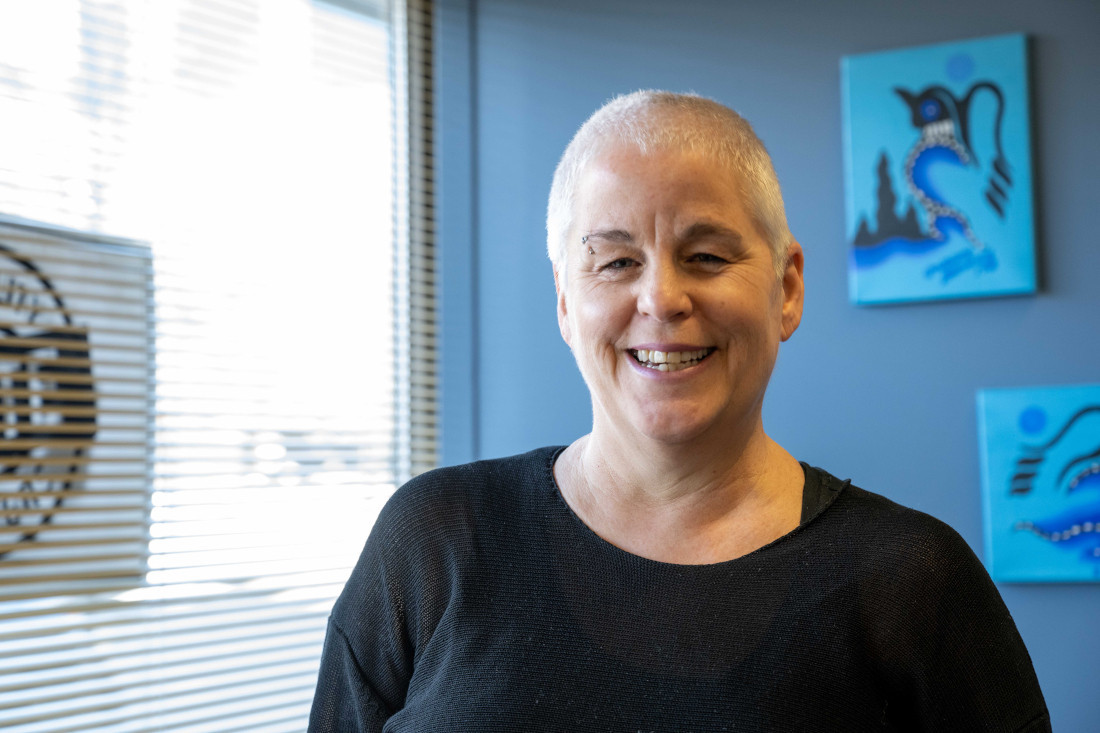‘Police really do one thing’
School resource officer program faces criticism once again
Winnipeg community groups and members have criticized the local school resource officer (SRO) program, especially in the wake of an equity-based report researcher Fadi Enaab released through the Canadian Centre for Policy Alternatives in October 2022.
The SRO program was established in 2002 and involves the deployment of Winnipeg Police Service (WPS) constables in elementary, middle and high schools. WPS Chief Danny Smyth says the program was formed to help build stronger relationships between communities and police.
However, Cam Scott, a community organizer with Police-Free Schools WPG, says the SRO program positions police in schools as “a community liaison or student resource,” when they’re really an armed and surveilling presence in school hallways.
The Louis Riel School Division (LRSD) discontinued its SRO program following Ennab’s report, which revealed how SROs negatively impact Black and Indigenous students. In total, 71 per cent of participants interviewed indicated that the program had a negative effect on these and other marginalized groups.
However, Scott explains, this change doesn’t mean the LRSD doesn’t have police in schools. “The individual teachers and administrators can still bring police in to do special presentations, and the police still offer their services,” he says.
In December, a police dog attacked and bit a kindergarten student during a visit from the WPS canine unit at Samuel Burland School. The school is part of the LRSD, and this attack happened after the division ended its SRO program.
Scott says he thinks the SRO program is not a school resource.
“That’s kind of a polite language that (the WPS uses) to get a toehold in student communities,” he says. “Ending the SRO program without making a human rightsbased commitment to police-free schools isn’t satisfactory, because the police will always find a way back in.”
A redacted version of Ennab’s report on police involvement in the LRSD was recently released. This sparked a response from Smyth, who criticized the validity of the report, given Ennab’s “outspoken anti-police views.” Smyth published his comments on blogging platform Substack, which marks a rise in police using public-relations tactics to respond to criticism.
While the local SRO program stipulates that officers must have completed five years of service within the WPS and have effective planning and organization skills, it is unclear what specific training officers receive before being placed in schools.
“These are not a special class of police officers who are equipped to offer resources to students or to participate in school cultures. These are armed beat cops who also have an assignment in schools,” he says.
“They aren’t abiding by any recognized standards within social services or school resource departments. They could easily be replaced in those capacities by somebody with the correct training,” he says.
Scott notes that official accounts about the program’s perceived efficacy often differ from how things work in practice. Police and school administrators who support SROs often claim that officers are there to provide in-school resources – not to police students.
“But under scrutiny, we have all heard of these stories of police escalating disciplinary measures against children, pushing for suspension and expulsion and handcuffing students in the hallways,” he says.
“Police really do one thing. It’s in their name. Their name is a verb. They police, and they aren’t trained counsellors, and they aren’t knowledgeable about best practices in harm reduction, in trauma counselling. They are entirely lacking in all of the training and resources required to do these things.”
Scott says defunding the SRO program could help fund community resources and alternatives to policing.
“I think (a) reduced police presence permits more opportunities for people to thrive and more opportunities for other affirmative and caring interventions, rather than security solutions,” he says.
Kate Kehler, executive director of Social Planning Council of Winnipeg, says that while the SRO program began with the proposed goal of building better relationships between communities and the police, it was applied unevenly across school districts.
This is especially relevant in neighbourhoods with higher poverty rates or where students are more likely to have family members who have been incarcerated, arrested or negatively impacted by police.
“You can build a good relationship with one police officer, but that doesn’t mean your entire experience with the police force is a good experience,” Kehler says.
She notes that money schools currently use to fund SRO programs could instead help employ more educational assistants, create meal programs and help guarantee other supports for struggling students.
Kehler’s child attended Kelvin High School during a fatal stabbing that took place on campus in 2015. “The SRO was not there,” she says. “The principal at the time said even if (the officer was) on duty at the time, (they) could have been across campus.”
While she doesn’t advocate for a police presence in schools, Kehler says one officer isn’t enough to deter some offenders. “Even in a school situation, a police officer will still only respond to a violent incident,” she says. “They don’t actually stop them from happening.”
Instead, Kehler mentions how community safety hosts or members of similar programs might better help schools, rather than armed and uniformed police officers.
Published in Volume 77, Number 24 of The Uniter (March 30, 2023)








